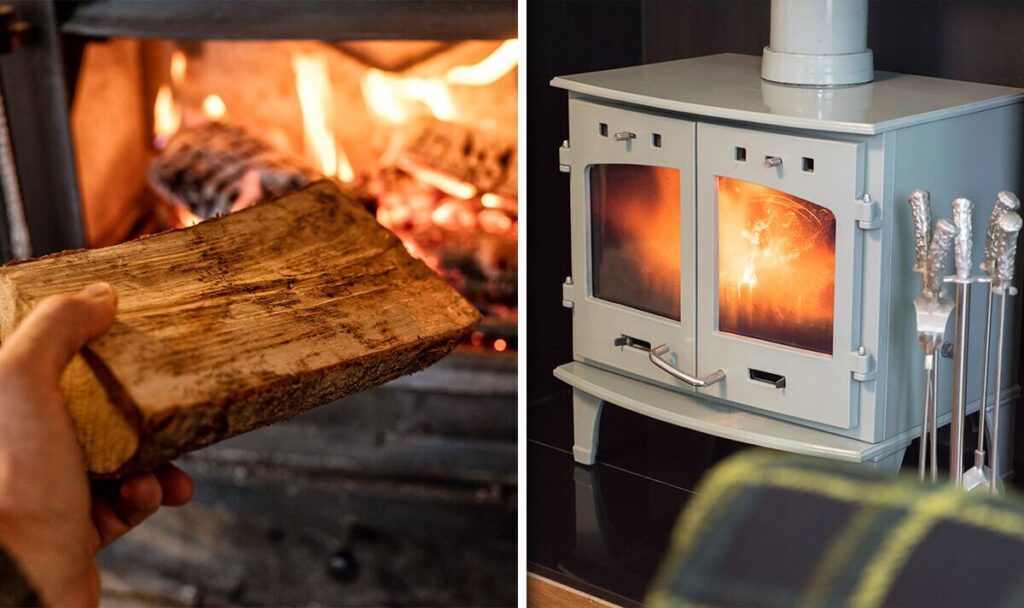Wood-burning stoves are a popular appliance amongst UK households to heat the home and understandably so – they’re warm, cosy, and with the rising electricity prices, it can feel like a more cost-efficient option for many. However, these stoves can have a detrimental impact on the environment, and for this reason, the Government has introduced a number of measures to ensure those in circulation run in the most eco-efficient way possible.
Emissions from domestic burning have significantly dropped since the 1950s, however, due to the recent surge in popularity, stoves and open fires have become the single biggest source of particulate matter emissions.
The Government plans to reduce particulate matter air pollution, which is considered the most damaging pollutant, by 30 percent by 2030.
With wood and coal-burning stoves allegedly accounting for 38 percent of this particulate matter, naturally, they have been a key target to regulate.
The Department for Environment, Food, and Rural Affairs (DEFRA) published a Clean Air Strategy in 2019, which promised: “In 2022 the new Ecodesign regulations will come into force, which will mean that all new stoves will need to meet agreed emissions standards, regardless of where they are used.
Read More: How to wash a duvet in the washing machine
“This will raise the standard of appliances across the whole country.”
On December 21 2021, Clean Air in London (CAL) published the results of “seven months of constructive correspondence” with the Climate Change Committee (CCC), which concluded the “Government should not support wood-burning stoves as part of climate policy and that their use should be phased out over time”.
Although there are no plans to ban wood-burning stoves as of yet, January 2022 marked the beginning of new Ecodesign regulations in a bid to reduce air emissions.
What are the new Ecodesign requirements?
As of January 2022, woodburning and multi-fuel stoves and fireplaces must now adhere to strict new guidelines, known as Ecodesign.
Only certain types of wood are suitable for burning and the wood must be dry, meaning the moisture content should be less than 20 percent.
To find out the moisture content of your wood, you can either invest in a moisture meter or ensure your wood is ready to burn by purchasing it from a bona fide supplier.
However, appliances that conformed with the previous requirements and were placed on the market before January 1, 2022, can still be sold legally.
If you happen to have an older stove, you can continue to use it and the legislation will not impact existing appliances already installed.
What is a DEFRA-exempt stove?
Many parts of the UK lie within ‘smoke control’ areas, which only allows you to burn an authorised fuel, or use an ‘exempt appliance’.
If you breach these regulations, you can be fined £1,000.
In a smoke control area, you can only burn fuel on this list of authorised fuels, which differ per country in the UK, or any of the following ‘smokeless’ fuels, unless you’re using an exempt appliance:
- anthracite
- semi-anthracite
- gas
- low volatile steam coal
Wood creates more smoke if it lacks a good supply of oxygen, and a DEFRA-exempt stove makes it harder for wood to smoulder, preventing it from oxygen loss.
So, not only will it reduce emissions, but it will also minimise soot build-up in your chimney, keeping your flue clearer for gases to escape.
To check if you live in a smoke controlled area, you can check with your local authority here.
Tips for buying a new wood-burning stove
- Check if you live in a smoke control area. If you are, you will need to look for a clearSkies Level 3 or above appliance as these will be Defra Exempt and will meet the Ecodesign requirements.
- Make sure any stove you buy holds the SIA approved logo to ensure your stove is compliant.
- Always employ a qualified installer to fit your stove, who will ensure your stove works efficiently, with minimal emissions.
- Check our Woodsure’s website to ensure you are purchasing from a reliable source.

